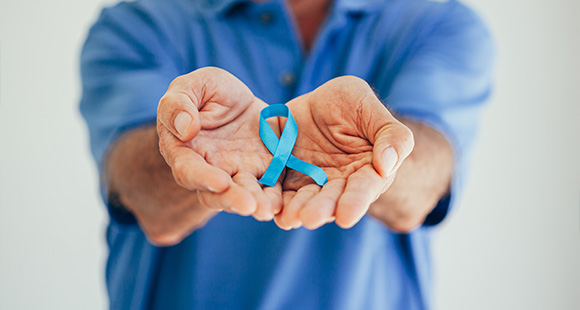
FAQs about Peyronie's Disease
Learn about PD, including its causes, symptoms, and the most effective treatments available.
This website offers over fifty pages of detailed information, making it one of the most comprehensive resources of its kind. If you're new here, start with some of the most commonly asked questions and answers to get a quick overview.
Find out more how MansMatters can help you
Contact us for a free 20-minute consultation with our men's health specialists.
Arrange a Free Telephone Consultation
Book a Treatment
Receive More Information & Our Explainer Video
How does MansMatters differ from other Peyronie’s clinics?
Most clinics in London primarily focus on surgical treatments for Peyronie’s Disease, with procedures that can cost up to £14,000. While some clinics may offer shockwave therapy, it is not typically their area of specialization, and surgery is often the recommended option. At MansMatters, we view invasive surgery as a last resort, referring patients only in rare cases. Instead, we specialize in advanced, non-surgical therapies specifically suited for Peyronie’s Disease. Not all shockwave technologies are the same, and many devices, while effective for orthopedic uses, lack the focus required for treating Peyronie’s. We use the Swiss-engineered Storz DUOLITH® SD1, which provides focused energy transfer ideal for this condition, along with a range of complementary technologies, including EMTT, NanoVi, Photo Activation, the Tesla Chair, and FMS. We are also unique in that some of our team members, including one of our founders, have personal experience with Peyronie’s Disease, giving us a deeper understanding of the condition.
What causes Peyronie's Disease
Peyronie's Disease often develops after minor injuries to the genital area. Common causes include bending or pressure during intimate activities, as well as sports injuries or other seemingly minor accidents, such as an unexpected impact. These injuries may lead to scar tissue formation in affected areas, resulting in what is known as Peyronie’s plaque. In addition to injury, other factors can contribute to the formation of Peyronie's plaques. Health conditions such as high blood sugar, tobacco use, or a history of pelvic trauma may increase the risk. Men with connective tissue disorders, like Dupuytren’s contracture, may also be more susceptible, as well as those with a family history of Peyronie’s Disease, indicating a potential genetic link.
When Should I See a Urologist or Men’s Health Specialist?
The sooner someone with suspected Peyronie’s Disease consults a Urologist or Men’s Health Specialist, the better the chances for a positive outcome. Potential Signs of Peyronie’s Disease to Seek Advice On: Curvature when aroused Shortening of the affected area Narrowing or “hourglass” shape along the shaft Lumps beneath the surface Discomfort when aroused or during intimacy Unexpected softness when aroused A physical examination by a specialist is often enough to detect scar tissue and confirm a diagnosis of Peyronie’s Disease. Occasionally, other conditions may cause similar symptoms, which need to be ruled out. During the exam, the doctor will assess the affected area to locate scar tissue and may measure length to track any changes if the condition progresses. In some cases, an ultrasound or other tests are recommended to provide detailed images of soft tissue, assess blood flow, and identify any abnormalities."
What is Peyronie’s disease?
Peyronie’s Disease is a condition caused by the development of fibrous scar tissue within the male reproductive organ, resulting in curvature, indentation, or an hourglass shape. This bend can often cause discomfort, particularly during intimate activities. While Peyronie’s Disease primarily affects men over the age of 40, it can occur at any age and may be triggered by physical strain. The condition develops when plaques (flat segments of scar tissue) form beneath the skin, leading to bending or indentation during arousal. These plaques can sometimes be felt beneath the surface and may cause sensitivity to touch. In more severe cases, Peyronie’s Disease can make intimacy challenging or uncomfortable and may also lead to difficulties with firmness. It is rare for Peyronie’s Disease to resolve on its own; in most cases, it either remains stable or progresses over time. Early intervention can help prevent further development, and therapies such as Shockwave Therapy may alleviate symptoms. Even for those who have had the condition for some time, treatment can often provide significant improvement. Contact us for more information and a confidential consultation
What Preparation Do I Need to Do Before Treatment?
Please provide us with your medical history and details of any medications you are currently taking. This information helps us determine if you are a suitable candidate for shockwave therapy. We also recommend that you trim excess hair in the treatment area and maintain good hygiene before your visit.
Who is Peyronie’s Disease Named After?
Peyronie’s disease (PD) is named after French surgeon François Gigot de la Peyronie, who described the condition in 1743. He described a patient who had “rosary beads of scar tissue to cause an upward curvature of the private parts during stimulation.”
PD is indicated by a curvature in the shaft or the private parts that is often preceded by pain and accompanied by an area of fibrosis.
The condition was first described in 1561 in correspondence between Andreas Vesalius a Flemish anatomist, physician, and author of one of the most influential books on human anatomy, De Humani Corporis Fabrica Libri Septem (On the Fabric of the Human Body) and Gabriele Falloppio an Italian Catholic priest and anatomist often known by his Latin name Fallopius. Fallopian Tube is named after him.
Read more about The History of Peyronie’s Disease.
Why Do People Choose Shockwave Therapy for Peyronie’s?
As outlined in our Peyronie’s Disease Treatment Option page, Shockwave Therapy is the only non-invasive treatment that offers long-lasting results without the need for surgery. This approach makes it an attractive option for those seeking effective management of Peyronie’s Disease without the invasiveness of surgical procedures." .
Will Shockwave Therapy Leave Any Marks or Bruising?
Shockwave Therapy typically does not cause any marks or bruising during or after treatment, unless you have a pre-existing condition like hemophilia or a similar bleeding disorder.
Is Shockwave Treatment for Peyronie’s Disease Painful?
Some patients may experience mild discomfort during Shockwave Therapy, typically comparable to a moderate dental visit. Most find it manageable and well-tolerated.
What Ages of Men Do You Treat?
We can only treat men of the age of 18-years. After that, we have successfully treated men well into their 90’s.
Answers Provided by Clients from Their Testimonials
How Long Does It Take for the Therapy to Work?
“I am delighted to say, after six weeks of therapy, that my confidence and instincts have been well-founded. I can confirm that the improvement in my condition has been far beyond my initial expectations and the result is that I am looking forward to a happy and productive life. Not something I could conceive of before the treatment.” C.T.
What Changes in Curvature Can I Expect?
“Being pedantic about data, I photographed and measured changes in my manhood. This showed a dramatic and continuing improvement from week 2/3 onwards. A 600 horizontal bend reduced to 40 by week 6. Residual vertical curvature seems to be dominated by skin that needs to stretch.” Dr I.R.
What Effect Will the Treatment Have on My Private Life?
“Could not recommend the Shockwave treatment enough. After a sports injury I was left feeling down and thinking the only option was surgery. 6 treatments later everything is back to normal, and my confidence and private life is through the roof. Thank you.” A.C.
Knightsbridge
Richmond
MansMatters are specialists in non-invasive, nonsurgical procedures. We do not offer surgery but have professional relationships with leading surgical urologists and andrologists who undertake different types of Peyronie's disease surgery. If you would like to know more about surgical options, then please click here.
Surgical Procedures














